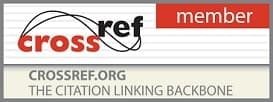2022, Vol. 6 Issue 2, Part A
Utility of the 30° oblique tangential view for evaluation of anteromedial cortical reduction in reconstruction of intertrochanteric fractures
Author(s): Dr. Mrudev V Gandhi, Dr. Vimal P Gandhi and Dr. Yash P Oza
Abstract: Background: Intertrochanteric fractures are one of the most commonly presented cases at a tertiary care center. While operating them reduction of the fracture is a prime factor deciding the prognosis. Anatomical reduction of anteromedial cortex per se is the key parameter for stable reconstruction of the fracture. To evaluate this reduction conventional AP and Lateral projections are in wide use. A study was done to check the utility a novel 30 degree oblique tangential fluoroscopic projection to evaluate the quality of anteromedial cortical reduction.
Methods: To conduct this study normal side calibration confirmation was used in initial cases. Using steel wires along five anatomic landmarks: Greater trochanter, Lesser trochanter, Intertrochanteric line, Anterolateral tubercle and the Anteromedial cortical line were identified, after which conventional AP and lateral fluoroscopic views were taken. The C-arm of the machine was then rotated by every 10°increments until a clear tangential view of the anteromedial-inferior corner cortex was observed. 100 operative cases of intertrochanteric hip fractures were studied from September 2021 to May 2022. In all of those intra-operative AP, Lateral and 30degree oblique tangential views were used after reduction as well as after final fixation to assess the quality of anteromedial cortical reduction. For 28 cases fluoroscopic results were compared with the post-operative 3D-CT reconstruction images.
Results: The study on normal specimens showed that internal rotation of the C-arm to approximately 30° can remove all the obscure shadows and clearly display the anteromedial cortical tangent line. Intra-operative positive, neutral and negative apposition of anterior and medial cortices showed 78, 22 and 0 cases of medial cortical apposition in AP views; 17, 75 and 8 cases of anterior cortices in lateral views; and 70, 28 and 2 cases of anteromedial cortical apposition in oblique views respectively. The post-operative 3D-CT reconstruction images revealed that the final anteromedial cortical contact was noted in 72 cases (72.0%), and lost in 28 cases (28%). The coincidence rate between intra-operative fluoroscopy and post-operative 3D-CT was 89.0% (89/100) in AP view, 78.0% (78/ 100) in lateral view, and 82.0% (82/100) in oblique view (p<0.001).
Conclusions: Along with conventional AP and lateral projections, an additional oblique view of 30° becomes a very useful means for evaluation of the intra-operative anteromedial cortical reduction of fracture.
Pages: 24-28 | 442 Views 77 Downloads
How to cite this article:
Dr. Mrudev V Gandhi, Dr. Vimal P Gandhi, Dr. Yash P Oza. Utility of the 30° oblique tangential view for evaluation of anteromedial cortical reduction in reconstruction of intertrochanteric fractures. Nat J Clin Orthop 2022;6(2):24-28 DOI: https://doi.org/10.33545/orthor.2022.v6.i2a.363






